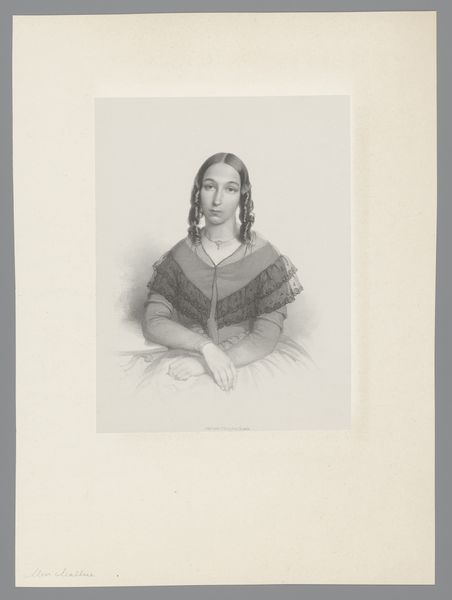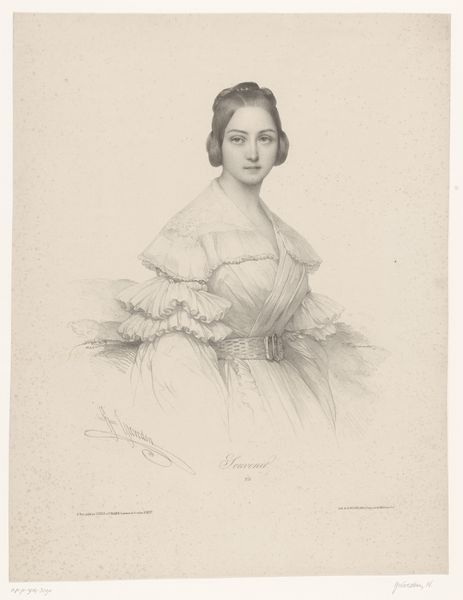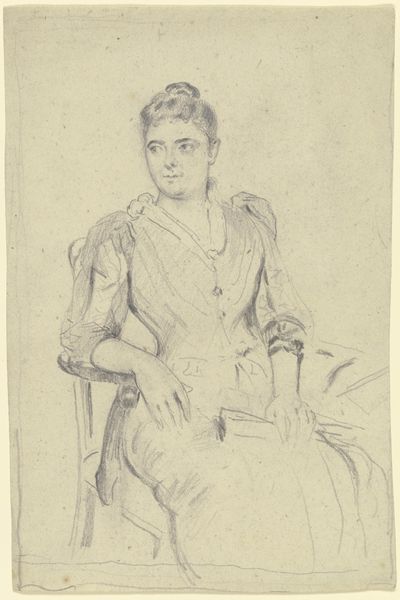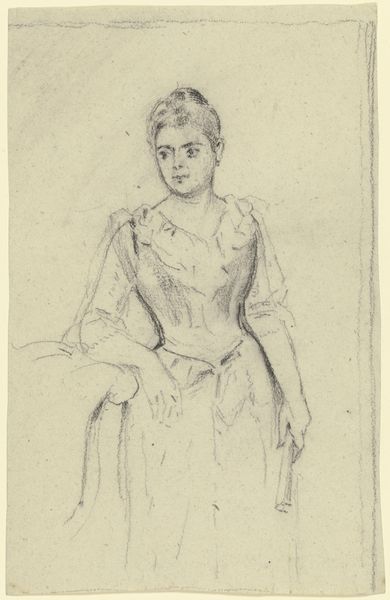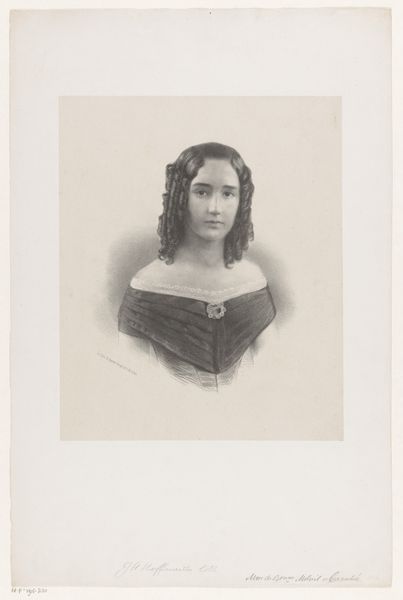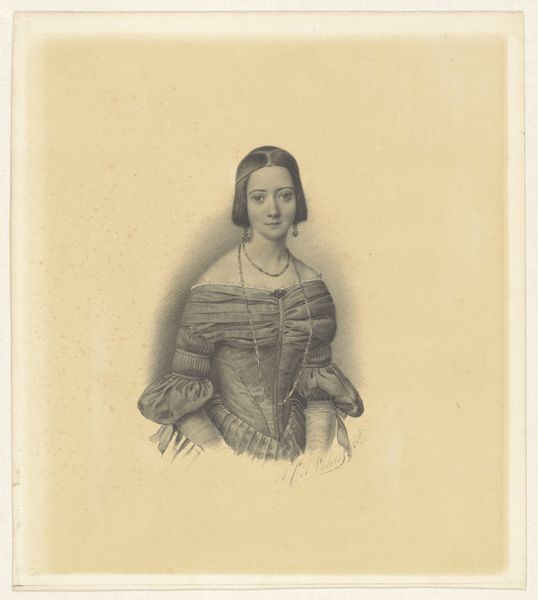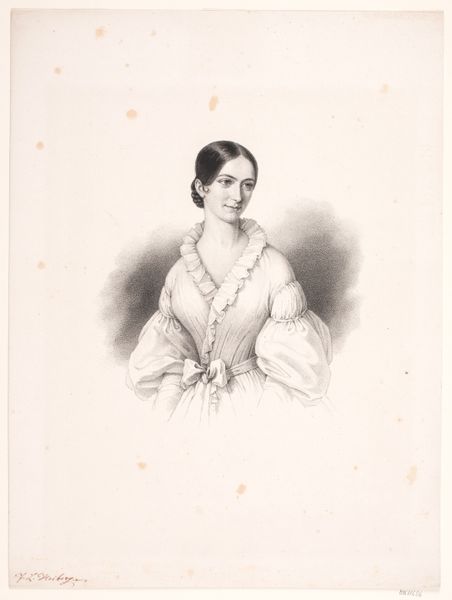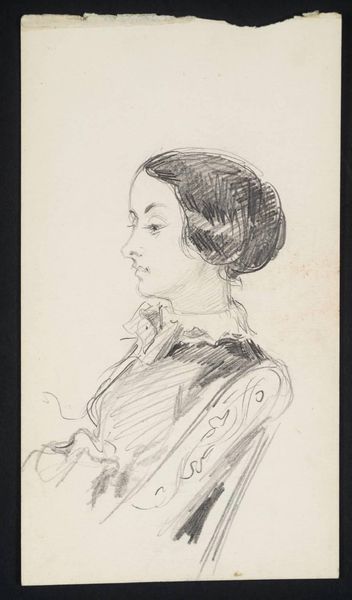
painting, watercolor
#
portrait
#
painting
#
figuration
#
watercolor
#
romanticism
#
watercolour illustration
Copyright: Public domain
Taras Shevchenko created this watercolour portrait of an unknown woman in a violet dress sometime between 1845 and 1846. Shevchenko was a Ukrainian artist who used his art to challenge the social norms of his time, particularly the institution of serfdom. Painted in the style of academic portraiture, the image creates meaning through its reference to European high culture, while at the same time subtly critiquing the rigid social structures of 19th-century Ukraine, which was then part of the Russian Empire. The sitter’s identity is unknown, but her attire suggests a woman of some status. The portrait would have been commissioned by the sitter or a member of her family. While seemingly conservative, Shevchenko's focus on Ukrainian subjects and themes was a progressive act, helping to foster a sense of national identity and pride in Ukrainian culture, at a time when the Russian Empire sought to suppress it. Art historians often consult archives, letters, and other primary sources to better understand the social and institutional contexts in which art is made. The meaning of art is contingent on social context.
Comments
No comments
Be the first to comment and join the conversation on the ultimate creative platform.



